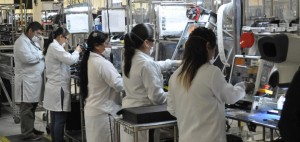By David Magallanes
Amigos805.com
OXNARD, CA — As I walk across campus at the community college where I teach, I sometimes get the impression that I can almost hear my own footsteps as I walk toward my classroom or to an office I need to visit. In the parking lots, students actually have plenty of parking to choose from (there’s always an upside…). I almost feel as if, compared to the boom times of yesteryear, I’m in a ghost town.
Well, I don’t exactly see tumbleweeds blowing across the fields (though I used to when the college was first built), but we just don’t have the number of students we used to have. And not because they don’t want to attend. It’s just that we don’t have the classes for them due to budget cuts.
I tried looking up some late statistics on the college web site, but the last ones posted were for Spring 2011. I noted that our student population was at a peak in 2008, and then — right about the time the recession hit — we started our decline in student population.
The budget cuts have not yet fully impacted us. We’re scheduled to see more devastation in the coming months. Not just classes, but sports, cafeterias and student services are being slashed and burned throughout the county’s colleges because the state is no longer funding them, or because the college district considers them a lower priority than other aspects of education.
At our college, we recently found that we’re losing a chunk of our arts and other programs next semester. I’ve sensed the system collapsing around me for the past couple of years, and every time I think it can’t get worse, it does.
I see my students “freeway-flying” around the county — and surrounding counties — to different colleges both within and without the district, trying to get the classes they need to graduate.
I see students without cars who can’t possibly commute between cities to do this, even if they want to, because we live in Southern California, where taking a bus is so time-inefficient that it’s not even worth it in many cases for those who have tight schedules — like students.
I also see students crushed by the daunting prospect of funding a university education, assuming they can even get the classes they need.
I have engineering students in my classes who couldn’t even get into the comparable classes on their university campus because they were blocked from doing so by the sheer numbers of students already taking those few precious seats. I hear of education graduates who are ready to teach in our classrooms, but can’t find job positions open and available at our K-12 schools.
I read about companies hiring engineers from other countries, especially China and India, because we don’t grow enough of our own expertise. We can’t expect to train engineers and scientists if we don’t have the classes and the support for them.
Our K-12 schools are creaking under the burden of all the testing they are obligated to do, and of all the students with so many needs; as a result, inspiring students with the arts or the beauty of mathematics or the wonders of science, or teaching them to handle their own finances, or how to repair an automobile, although to some extent accomplished, is necessarily secondary.
I hear of graduates with masters degrees working far below their level of preparation because they can’t find the employment to which they had aspired.
I sense a hint of despair in the general college student population because they don’t know if all their efforts are going to pay off. On the contrary, they wonder if they will be saddled with a student debt that they can’t possibly repay. Taking on student debt becomes a gamble of a lifetime…
Finish reading Commentary: Is U.S. education unraveling?





